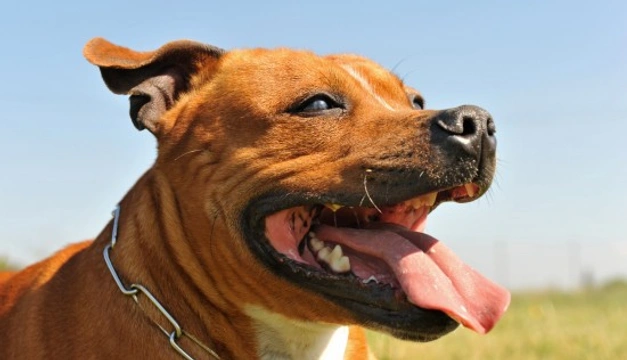
Investigating ‘Aggressive Breed’ Stereotypes
In the UK, there is a ban on several breeds that have been deemed too aggressive for domestic life. These animals, such as American Pit Bull Terriers and the Japanese Tosa are no longer allowed to be purchased or kept in the UK. However, increasing numbers of people are finding ways to keep these dogs, and in America, Pit Bulls are some of the most popular breeds. Other dogs, such as Staffordshire Bull Terriers and Bull Mastiffs, also have a bad reputation, but these are allowed to be kept as pets. Is there any truth to the fear and the rumours? Can aggressive breeds to kept in a family home?
American Pit Bull Terriers are the most notoriously recognised ‘aggressive’ breed of dog. Through dog fighting and the media, Pit Bulls have become known as the most dangerous breed, yet in the States many people love them as loyal and gentle family pets. How can the two equate? The key thing to remember here is that the breed gets its bad name due to the uses it was forced to have by humans. Similarly, Staffordshire Bull Terriers. Both of these breeds are frequently bred as fighting dogs. They have a strong, and relentless, bite, which is obviously essential to a fighting dog. Though dog fighting is illegal in the UK, it still goes on, and therefore these animals are still being ‘trained’ to be aggressive. Methods used to ‘train’ these dogs to fight are abuse. They are exercised well to build up muscle and endurance, but they are also taught fear. A defensive dog exhibits signs of aggression, and is therefore desirable. Ergo, a dog who is taught to fear will then be taught to defend, or fight. There are plenty of examples of Pit Bulls and Staffies that have never been taught to fear humans or other dogs. These animals make wonderful pets, and seldom have any problems with aggression or violence.
Pit Bulls and other ‘aggressive breeds’ have been bred for aggression. It is difficult to blame anyone other than the humans for the development of stereotypes and fear surrounding the breeds. They were bred by humans, encouraged to exhibit aggressive behaviour, which was then rewarded, and then bred from. These lines of dogs are more likely to show signs of aggression, as it has been taught to them. This does not mean that they will be aggressive towards humans, but it does mean the greater care needs to be taken with other dogs.
It is important to consider the motivation behind the aggression. More often than not, it is simply fear. When you accept this, it is difficult to blame the dogs for reacting out of fear or self-defence. This has been trained into them, and can be very difficult to train out of. Ultimately, though, these traits of fair and fear-related aggression, can appear in any breed of dog, even those thought to be generally placid. The difference comes in the potential for damage done. If a Chihuahua is frightened and lashes out and bites your hand, it will hurt, but you will probably recover fine in time. If a Pit Bull lashes out and bites your hand, he will have been trained to not let go, and can easily cause severe damage. It’s difficult to say, therefore, if the ban on these dogs is justified. Most dog lovers are of the belief that it is never the dogs to blame, but actually the owners. Unfortunately with the end of the Dog License, there is now no way to control how people treat their pets. If an ‘aggressive breed’ is brought up in the right environment, there will likely be no instances of aggression or biting. Oftentimes it is just through lack of understanding or care that these animals are reacting.
There is truth in the statement that certain breeds of dog have the potential to be more violent than others. But that is true of any creature. Size and strength are factors outside of the dog’s control, and as previously noted, smaller dogs can be just as aggressive with far less damage. If you are considering owning one of these breeds of dogs, make sure you are doing it for the right reason. If you are looking for a dog to defend you, most dogs will do that anyway without any aggression or fear training. These traits are bred for and can be ruled out with proper breeding and care. It’s very sad to see innocent animals put down due to effectively the actions of their owners, and it is important that more people realise that there is not much truth to the allegations that some dogs are dangerous breeds. Any dog can be dangerous, just as any person can be dangerous. Environmental and training changes can vastly improve the lives of the dogs, as well as the perceived safety of those around them.



